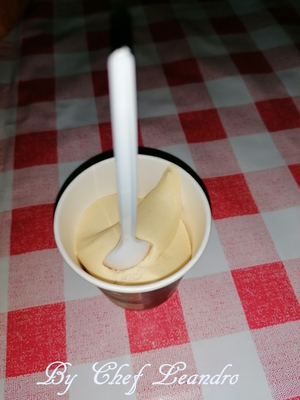Date: Sunday, 23/02/2020
Exploring, Filming, Documenting the vineyards
of Finca Lajares
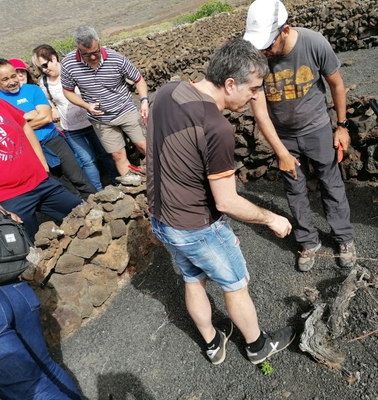
The vineyards of La Gería, Lanzarote DO wine region, are a protected area. Single vines are planted in pits 4–5 metres (13–16 feet) wide and 2–3 metres (6 feet 7 inches–9 feet 10 inches) deep, with small stone walls around each pit. This agricultural technique is designed to harvest rainfall and overnight dew and to protect the plants from the winds.
Videos - Exploring, Filming, Documenting the vineyards of Finca Lajares
Activity - Erasmus Enocultura Finca Lajares, Pruning Workshop
Activity - Exploring, Filming, Documenting the vineyards of Finca Lajares Part 1 of 4
Activity - Exploring, Filming, Documenting the vineyards of Finca Lajares Part 2 of 4
Activity - Exploring, Filming, Documenting the vineyards of Finca Lajares Part 3 of 4
Activity - COCHINEAL BEETLES -Exploring, Filming, Documenting the vineyards of Finca Lajares Part 4 of 4
The cochineal (/ˌkɒtʃɪˈniːl/ KOTCH-ih-NEEL, /ˈkɒtʃɪniːl/ KOTCH-ih-neel; Dactylopius coccus) is a scale insect in the suborder Sternorrhyncha, from which the natural dye carmine is derived. A primarily sessile parasite native to tropical and subtropical South America through North America (Mexico and the Southwest United States), this insect lives on cacti in the genus Opuntia, feeding on plant moisture and nutrients. The insects are found on the pads of prickly pear cacti, collected by brushing them off the plants, and dried.
The insect produces carminic acid that deters predation by other insects. Carminic acid, typically 17-24% of dried insects' weight, can be extracted from the body and eggs, then mixed with aluminium or calcium salts to make carmine dye, also known as cochineal. Today, carmine is primarily used as a colorant in food and in lipstick (E120 or Natural Red 4).
The carmine dye was used in North America in the 15th century for coloring fabrics and became an important export good during the colonial period. After synthetic pigments and dyes such as alizarin were invented in the late 19th century, natural-dye production gradually diminished. Health fears over artificial food additives, however, have renewed the popularity of cochineal dyes, and the increased demand has made cultivation of the insect profitable again, with Peru being the largest exporter. Some towns in the Mexican state of Oaxaca are still working in handmade textiles using this cochineal.
Other species in the genus Dactylopius can be used to produce "cochineal extract", and are extremely difficult to distinguish from D. coccus, even for expert taxonomists; that scientific term from the binary nomenclature, and also the vernacular "cochineal insect", may be used (whether intentionally or casually, and whether or not with misleading effect) to refer to other biological species. (The primary biological distinctions between species are minor differences in host plant preferences, along with very different geographic distributions.)
Source: https://en.wikipedia.org/wiki/Cochineal
Posters - Exploring, Filming, Documenting the vineyards of Finca Lajares
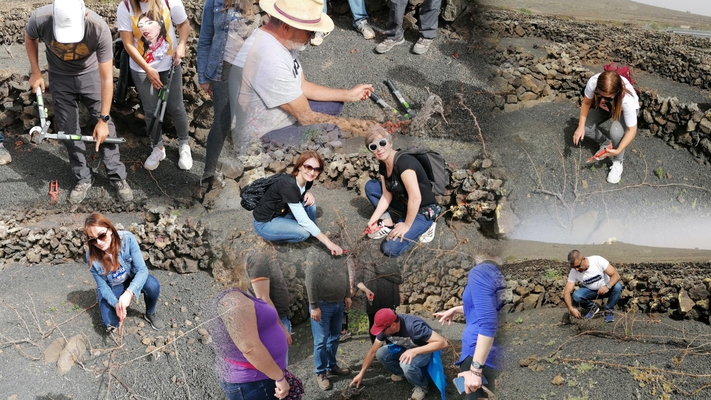
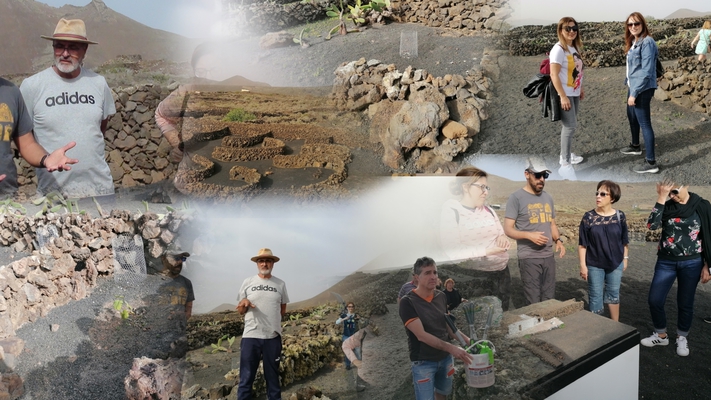
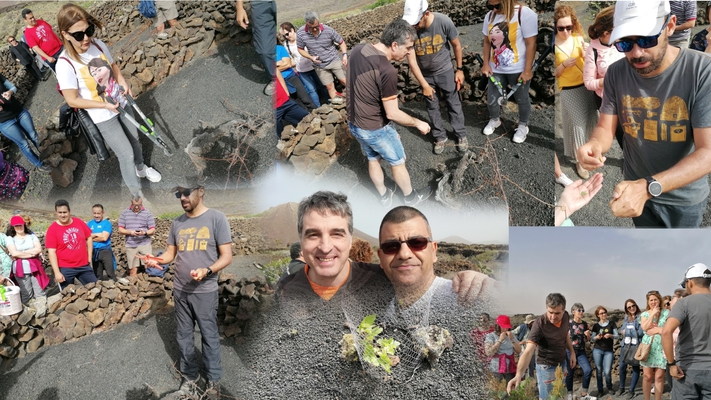
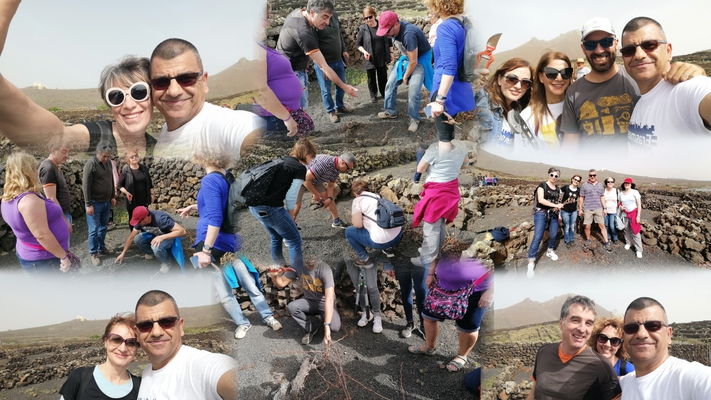
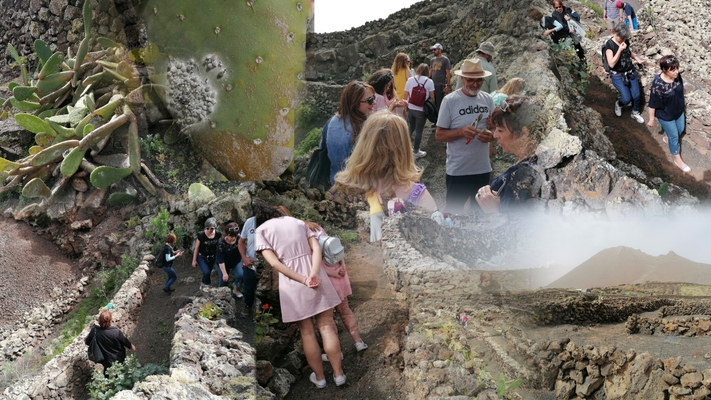
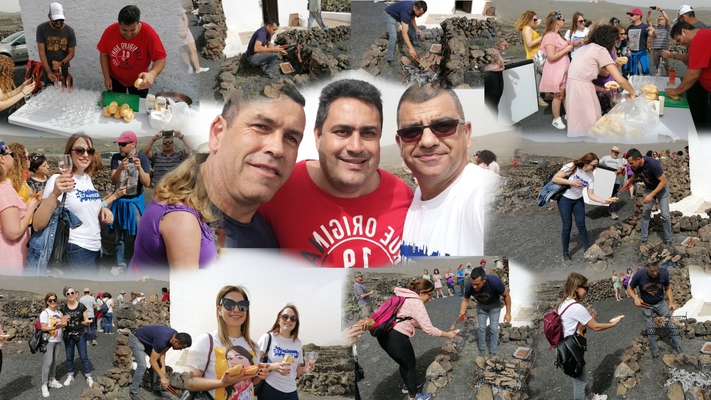
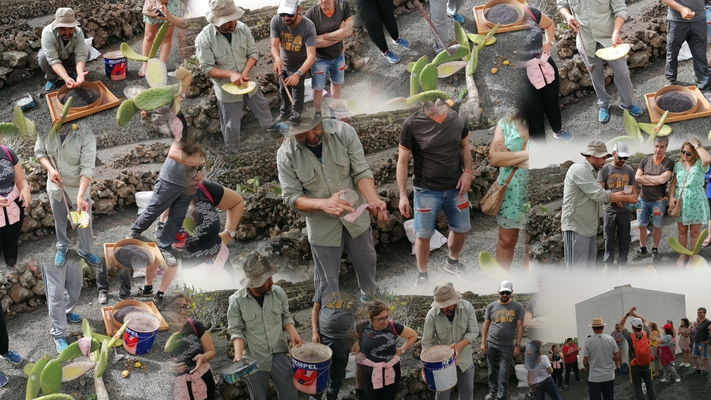
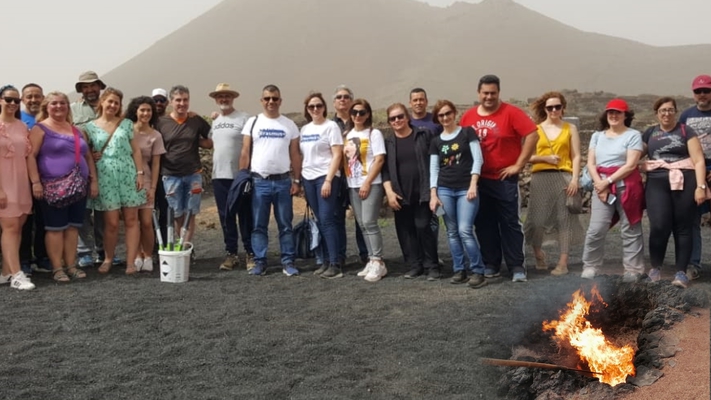
Poster - Lunch in Arrieta
Arrieta is a small coastal village on the municipality of Haría, which is the northernmost municipality of island of Lanzarote (Spain/Canary Islands). In 2013 about 300 people lived in Arrieta. The beach (playa "La Garita") is famous and very popular among locals and tourists. As a tourist destination it is pretty crowded in the seasons and there are amenities for ~2000 guests in the direct vicinity of Arrieta.
The name refers to the capital of the county Haría and means 'the small Haría'.
The "playa de La Garita" is about 810 m wide and consists of white sand (in contrary to the rocky beaches and beaches with black sand on Lanzarote). Some of the locals still live their lives as fishermen and maintain historic traditions.
There is a small "Museum" on the topic of Aloe Vera - a plant that is used to make beauty culture, cosmetics and anti-inflammatory products.
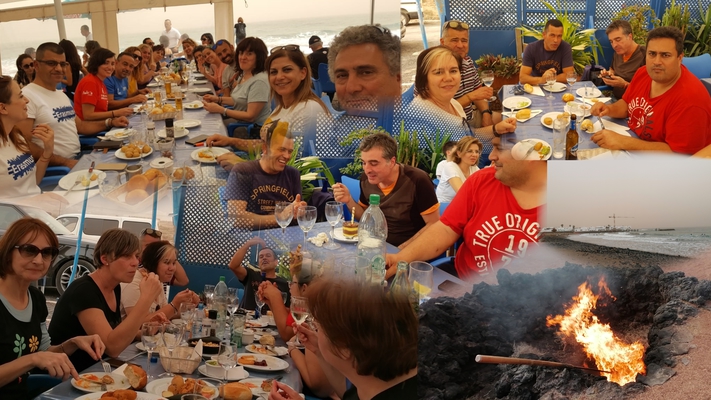
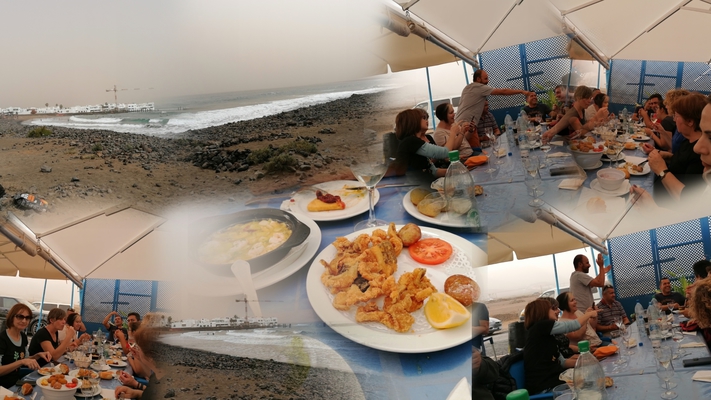
Visiting the School of IES TEGUISE - Meeting Host Partner
http://ies-teguise.com/
Poster
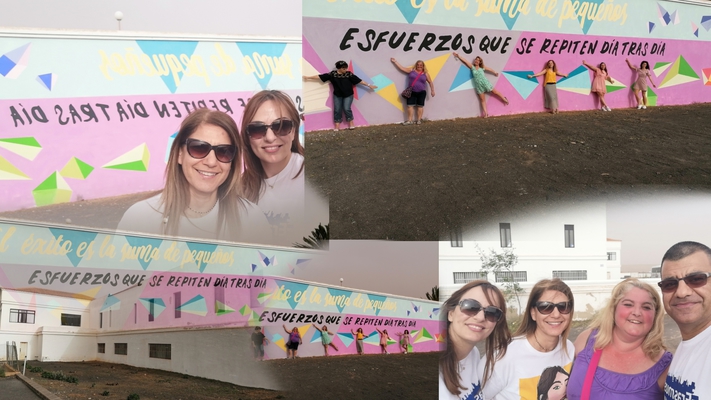
A deep dive into the Canarian Cuisine
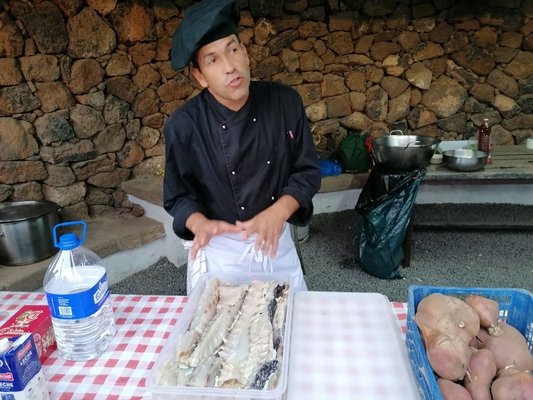
Canarian cuisine refers to the typical dishes and ingredients in the cuisine of the Canary Islands, and it constitutes an important element in the culture of its inhabitants. Its main features are its freshness, variety, simplicity, and the richness of its ingredients (which may be a result of the long geographical isolation the islands suffered), the mix of seafood and meat dishes, its cultural influences and the low knowledge of it by the rest of the world. Canarian cuisine is influenced by other cultures, specially the aboriginal inhabitants of the islands (Guanches) and Latin American cuisine (specially after the 20th-century Canarian migration to Latin America). Some African influences still prevail as well.
Source: https://en.wikipedia.org/wiki/Canarian_cuisine
Activity-Traditional Canarian Cuisine by (Leandro) Instituto de Teguise
Activity - Canarian Mousse de Gofio using Cyprus St. John Commandaria Wine
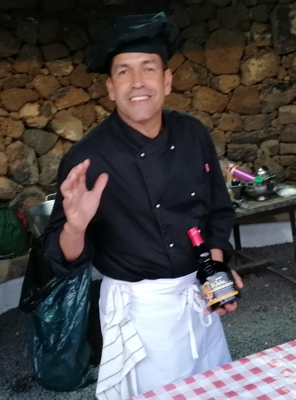
Chef Leandro
Gofio is a sort of Canarian flour made from roasted grains (typically wheat or certain varieties of maize) or other starchy plants (e.g. beans and, historically, fern root), some varieties containing a little added salt. Gofio has been an important ingredient in Canarian cooking for some time, and Canarian emigrants have spread its use to the Caribbean (notably in Cuba, Dominican Republic, Puerto Rico, and Venezuela) and the Western Sahara. It is also found in Argentina, Uruguay, and Chile, where it is known as harina tostada and is employed in a wide variety of recipes. The gofio commercially available in the Canary Islands is always finely ground, like ordinary flour, despite the definition given in the Spanish Dictionary of the Royal Academy.
Source: https://en.wikipedia.org/wiki/Gofio
Commandaria
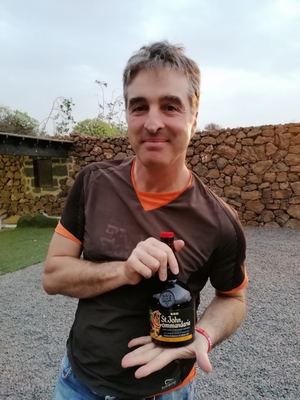
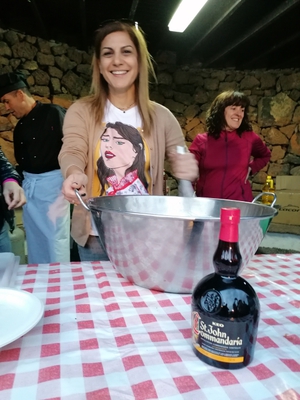
Commandaria (also called Commanderia and Coumadarka; Greek: κουμανδαρία, κουμανταρία and Cypriot Greek κουμανταρκά) is an amber-coloured sweet dessert wine made in the Commandaria region of Cyprus on the foothills of the Troödos mountains. Commandaria is made from sun-dried grapes of the varieties Xynisteri and Mavro. While often a fortified wine, through its production method it often reaches high alcohol levels, around 15%, already before fortification. It represents an ancient wine style documented in Cyprus back to 800 BC and has the distinction of being the world's oldest named wine still in production, with the name Commandaria dating back to the crusades in the 12th century.
Source: https://en.wikipedia.org/wiki/Commandaria
Posters
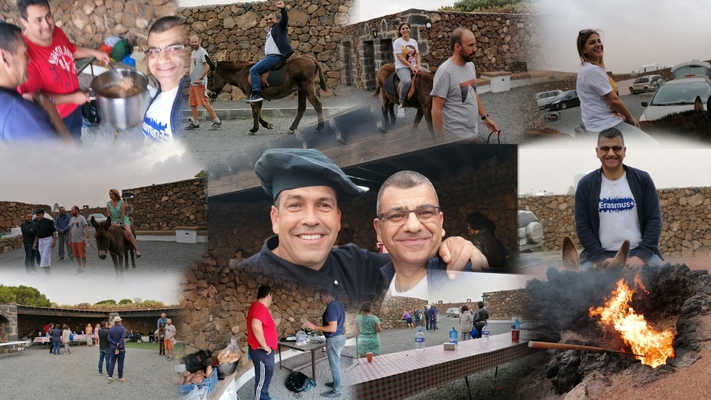
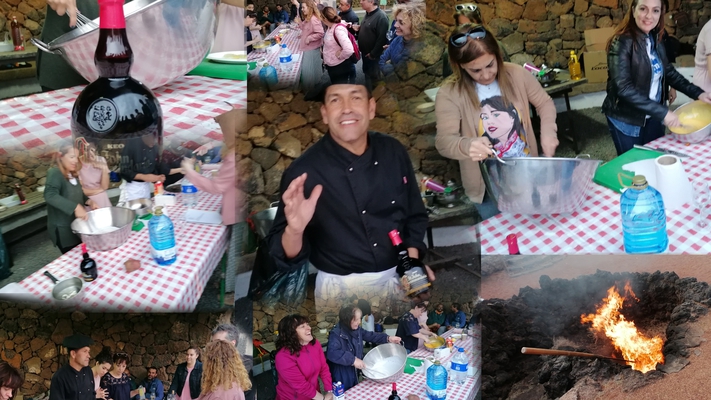
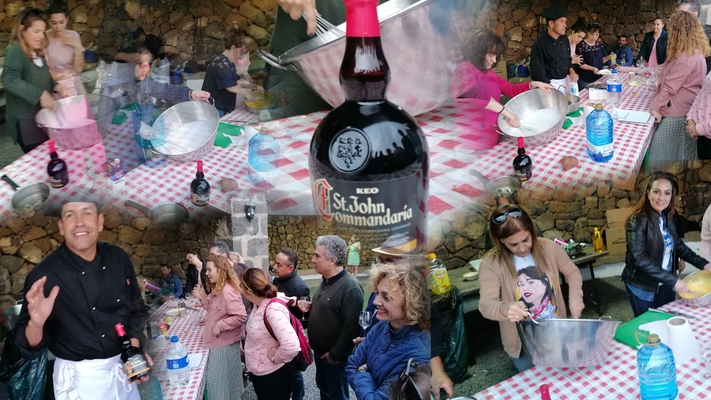
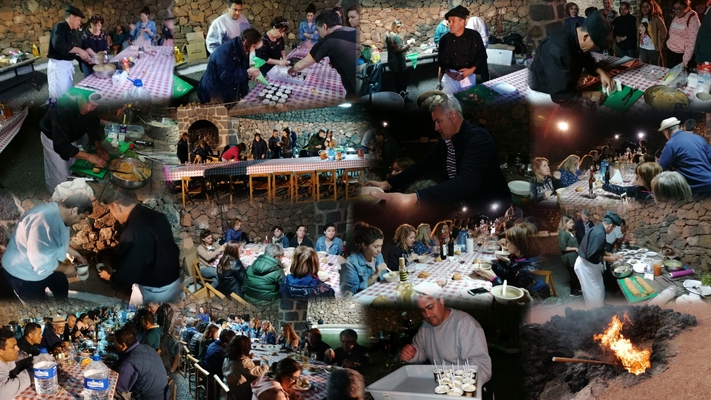
Canarian Mousse de Gofio using Cyprus St. John Commandaria Wine
♥ MOUSSE de GOFIO ♥
